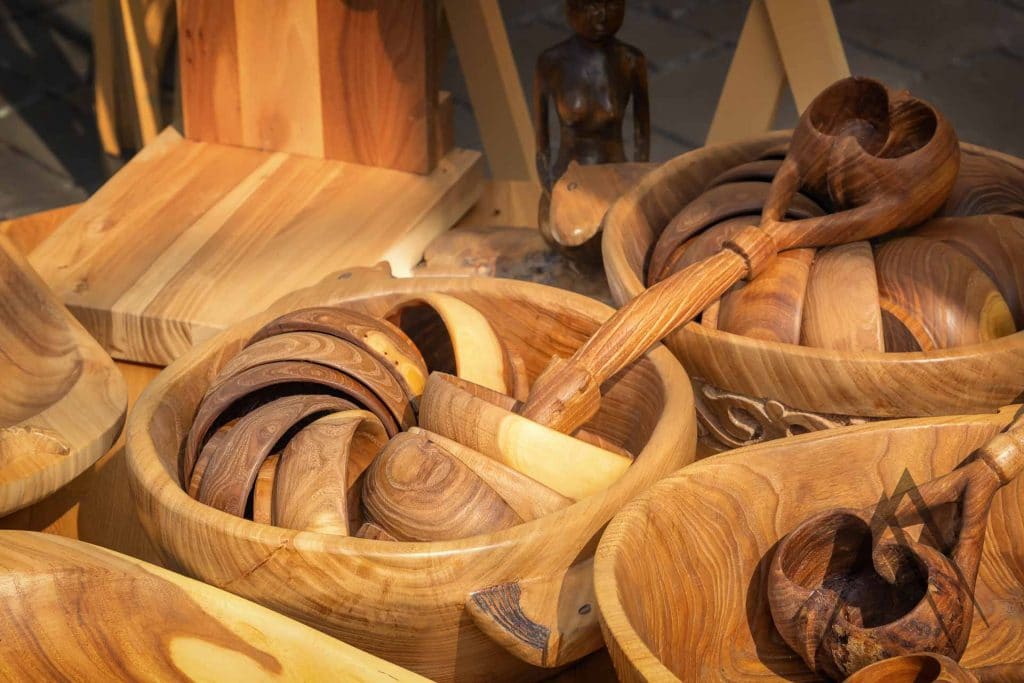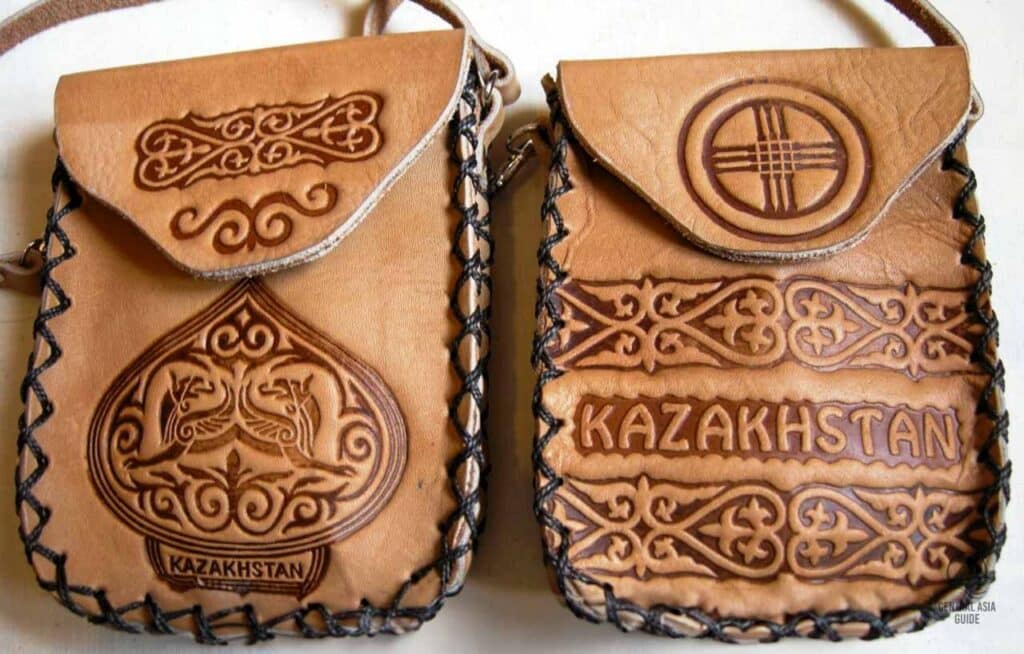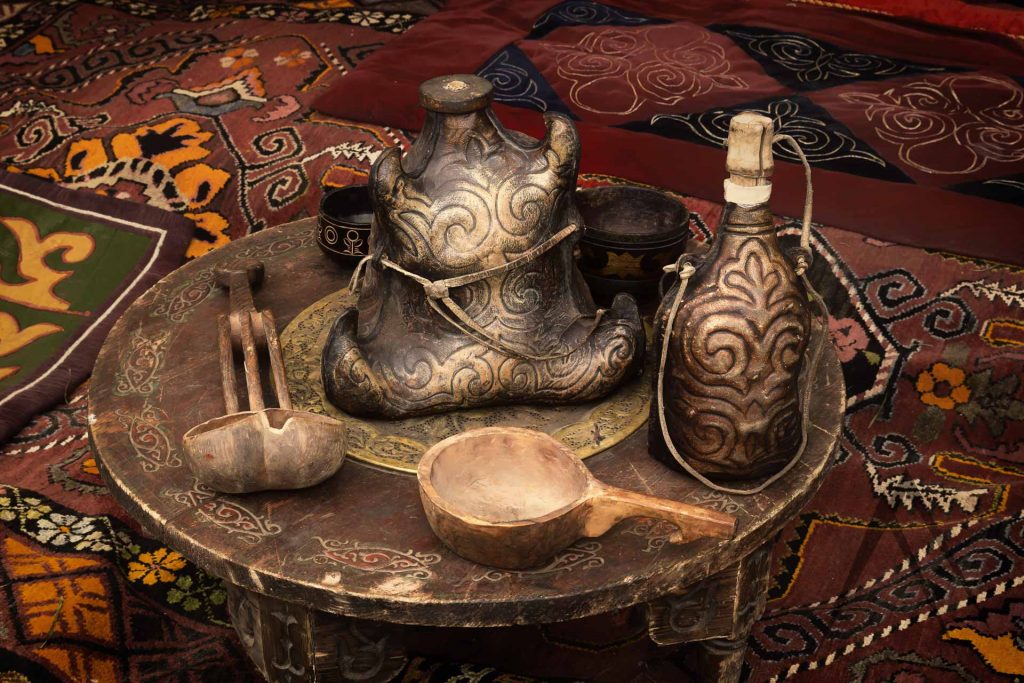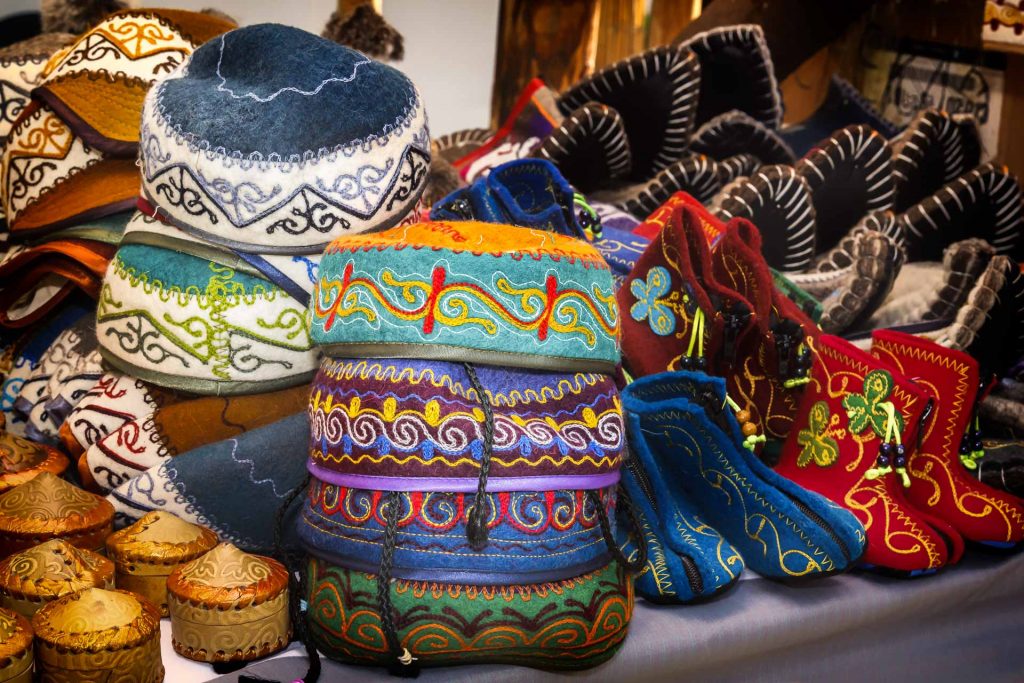Artigianato nazionale kazako
Kazakh National Crafts
Kazakhstan has its unique folk crafts that originated in antiquity and developed over the years. Kazakh folk crafts were formed under the influence of the nomadic culture of the Kazakh tribes. The tough and harsh life of the nomads forced Kazakh nomads to independently make everything they needed for life from what they had at hand.
Cattle breeding and hunting were the main job of the nomads, which is why products obtained from animals were used as materials for crafts: leather, wool, down, bones, horns of cattle, and small ruminants. All this led to the evolution of such crafts as felting and felt making, leather dressing, sewing leather and felt clothes, making carpets, and felt. The bones and horns of animals were used to make jewellery and some household items. Livestock leather and animal fur were used to make a wide variety of household items, from winter clothing and military armour to horse harnesses. Felt making is one of the most important and ancient Kazakh crafts.
Kazakh wood crafts
Wood craft was another significant material that nomads worked with. From wood Kazakh made dishes, weapons, furniture, and other household items, parts for saddles, handles for working tools, various lockers, and chests were made of wood.
All these items were often decorated with ornamental wood carvings. A special place in wooden crafts is occupied making Kazakh yurts and traditional Kazakh musical instruments.

Kazakh leather tradition
Leather was used to make shoes, in particular boots, because the nomads wore boots both in winter and in summer. Leather products were often decorated with embossing - this art was highly valued not only among Kazakhs but also among neighboring nations.


Kazakhs wool and felt
Felt is made from wool using various methods to compress the wool fibers to form a thick, durable, and warm material. The raw wool is placed upon cloth, wetted, and rolled tightly. It is then rolled, traditionally by being drawn behind a horse.
Felt products and processing remains as one of the most popular crafts in the decorative art of the great Asian steppes like Kazakhstan and other Central Asian countries. It was a major craft in Kazakh nomadic life as well as a significant work of women. Felt in Kazakhstan used mainly for flooring as a carpet well as covering a yurt. In addition, you can get a Kazakh felt souvenir toy, warm slippers, vests, scarves and much more.

Kiiz
Il Kiiz è un semplice tappeto in feltro di lana bianca, marrone o grigia, utilizzato come base per la realizzazione di altri prodotti o per coprire varie parti della yurta.
Syrmak
Il Syrmak è un tappeto da pavimento realizzato disegnando su una base (kiiz) motivi ornamentali ritagliati da feltro multicolore che vengono poi adattati alla base e cuciti con pizzi colorati lungo il contorno del motivo.
Tekemet
Il Tekemet è un tappeto di feltro kazako con colori inseriti uno sopra l’altro prima di essere arrotolati; diverse tribù del Kazakistan hanno i loro disegni.
Tuzkiiz
Il tuzkiiz è un tappeto da parete, realizzato cucendo composizioni ornamentali su feltro o su un tessuto a tinta unita come il velluto o la seta, per poi cucirle alla base di feltro.
Artigianato metallico kazako

I metalli sono un altro materiale che gli artigiani kazaki utilizzavano per l’artigianato, fondendo il metallo e ricavandone utensili, piatti e armi già nell’Età del Bronzo. Durante gli scavi, gli archeologi hanno scoperto molti depositi sopravvissuti nel sito degli antichi insediamenti, dove venivano estratti minerali e fusi ferro, argento e rame. Molti oggetti erano realizzati in rame nativo. Il fabbro era un’abilità essenziale nella vita dei nomadi: avevano costantemente bisogno di ferri di cavallo, staffe, parti di finimenti e bardature per cavalli, coltelli, armi e altri strumenti. Sebbene l’attività di fabbro richiedesse uno stile di vita più stabile da parte dell’artigiano, le fucine venivano costruite e lavoravano principalmente negli insediamenti e nelle città della Grande Steppa. I nomadi spesso acquistavano prodotti metallici finiti dai fabbri stanziali, piuttosto che realizzarli da soli. L’artigianato dei fabbri e dei gioielli si sviluppò in città come Sygnak, Otrar, Taraz, Turkistan e altre.
Inoltre, i gioiellieri kazaki erano soliti utilizzare molte tecniche: forgiatura, inseguimento, stampaggio e altre. Il materiale principale per la decorazione era l’argento, meno spesso l’oro. L’argento veniva utilizzato per creare anelli, bracciali, orecchini e ciondoli, dettagli di abbigliamento - fibbie e bottoni. Armi, mobili, vestiti e altri oggetti domestici erano spesso intarsiati d’argento.